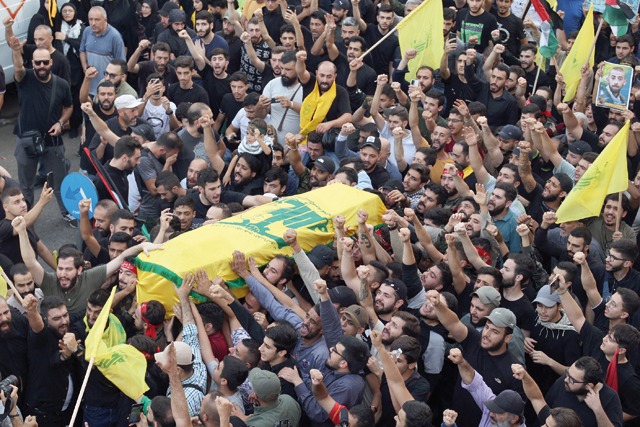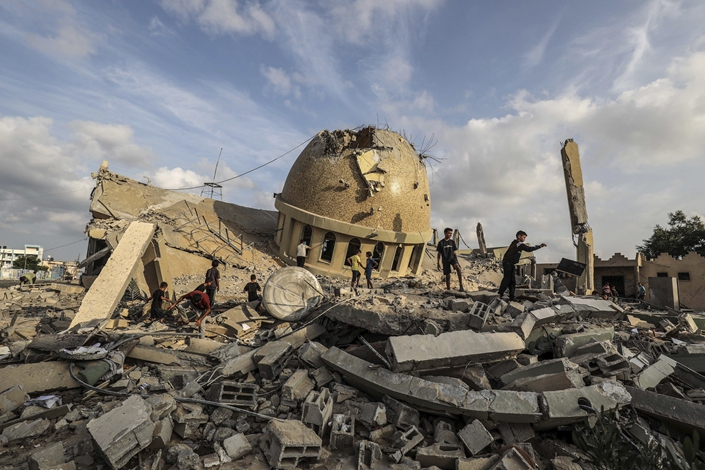UN Agency Reports Soaring Internal Displacement
The International Organization for Migration (IOM) reveals that over 19,000 people have been internally displaced in South Lebanon and other parts of the country since early October due to an increase in cross-border incidents.
Rising Cross-Border Tensions Threaten Stability
The IOM warns that the numbers could further surge if cross-border tensions continue to escalate, placing additional strain on the already fragile resources of host communities and Lebanon’s struggling health system.
South Lebanon’s Displaced Seek Shelter
Many displaced individuals have sought refuge in the coastal city of Tyre, while local authorities manage designated schools used as shelters. However, this movement strains both host families and a government grappling with an economic crisis.
Geneva – The escalating cross-border tensions between Israel and Hezbollah have led to the displacement of more than 19,000 individuals in South Lebanon and other regions of the country, as reported by the International Organization for Migration (IOM).
The IOM’s latest figures indicate that 19,646 people have been internally displaced in Lebanon since early October due to an alarming surge in cross-border incidents. This displacement has affected populations both in the southern region and elsewhere within the country. The ongoing tension between Israel and Hezbollah, marked by frequent exchanges of fire along the border, has intensified the situation.
Mohammedali Abunajela, spokesperson for the IOM, emphasized that the numbers are likely to increase if cross-border tensions persist or if violence escalates further. He explained that “amidst a deteriorating economic situation and the significant rise in poverty across all populations in Lebanon, internal displacements may add additional stress to the resources of host communities.”
One of the most concerning aspects of the situation is the strain placed on Lebanon’s already fragile health system. Abunajela highlighted the severe resource shortages in the country’s health system, including critical shortages of medicines and medical personnel. He warned, “In this context, responding to large-scale displacement and health casualties that might occur… may overwhelm the already fragile health system.”
As a response to the increasing displacement, most of those affected have found shelter in host family settings, while three designated schools, managed by local authorities, have been repurposed as shelters to accommodate those in need. This situation is, however, putting immense pressure on both host families and the government.
Inaya Ezzeddine, a lawmaker from Tyre, expressed her concern about the strain on families hosting the displaced individuals. She pointed out that the war is unfolding amid a significant economic crisis in the country, making provisions for the displaced difficult. Ezzeddine revealed that approximately 6,000 people have sought refuge in Tyre, with three schools being used to shelter some of them. However, opening more schools for the displaced is a challenge, as existing schools are still operating, and doing so would deprive pupils of their educational facilities.
One schoolteacher, Yolla Ali al Swaid, shared her experience of fleeing to Tyre after her home in the border village of Dhaira was shelled. The overcrowding in shelters is prompting some individuals to contemplate returning home, despite the risks. Swaid revealed, “There are people who are thinking about hanging white sheets on their homes when they go back there.” She herself had also fled her home during the 2006 war.
The impact of the escalating tensions is evident in the rising casualty numbers. At least 40 people have been killed on the Lebanese side of the border, with four of them being civilians. Tragically, one of the civilians killed was Reuters journalist Issam Abdallah. On the Israeli side, four people have lost their lives, including three soldiers and one civilian.
The situation remains fluid and fraught with uncertainty, as international efforts to de-escalate tensions continue. As the region faces the challenges of displacement, strained resources, and a fragile health system, the focus remains on finding a resolution to the ongoing crisis to prevent further suffering and loss of life.















